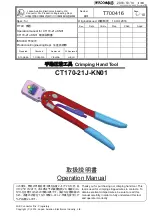
1.
Air conditioning of the Challenger is
achieved by:
A. A vapor cycle system
B. A liquid cycle system
C. An air-cycle system
D. A combination of the above.
2.
Cooling airflow for the air-conditioning
heat exchangers during ground operation
is supplied by:
A. B l e e d - a i r- o p e r a t e d j e t p u m p s , o r
ejectors
B. Electrical blowers
C. Recirculated cabin air
D. Pneumatic-driven blower
3.
The major difference between the nor-
mal and standby modes of temperature
control is:
A. The duct temperature sensor is by-
passed
B. The cockpit temperature selector con-
trols both areas
C. Standby control does not require elec-
trical power
D. Input signals from fan sensors are
bypassed
4.
If the left ACU FAIL light illuminates
and the left BLEED AIR switchlight
BLEED CLOSED legend does not illu-
minate, the problem is caused by:
A. A faulty isolation valve
B. A left ACU overtemperature condition
C. The left temperature control valve is
failed open
D. Overpressure in the left ACU
5.
If the engines are not operating, the APU
has started, the APU READY light is on,
and the APU fails to deliver air to the
bleed-air manifold when selected, check
that the:
A. The APU generator is on
B. The ACU valves are open
C. The ISOL valve is open
D. The left and right engine BLEED AIR
switchlights are off
6.
Instrument cooling air is supplied from
the:
A. Left and/or right ACU cold air ducts
B. Cabin conditioned air ducts
C. Footwarmer and demist system
D. Cockpit conditioned air duct
7.
The ACU jet pumps’ (ejector) valves are
controlled by the:
A. Cockpit heat switch
B. ACU switchlights
C. Temperature selector switches
D. WOW system
FlightSafety Canada
L t é e
L t d .
CL-600-2B16 PILOT TRAINING MANUAL
CL 601-3R
11-9
FOR TRAINING PURPOSES ONLY
QUESTIONS
















































